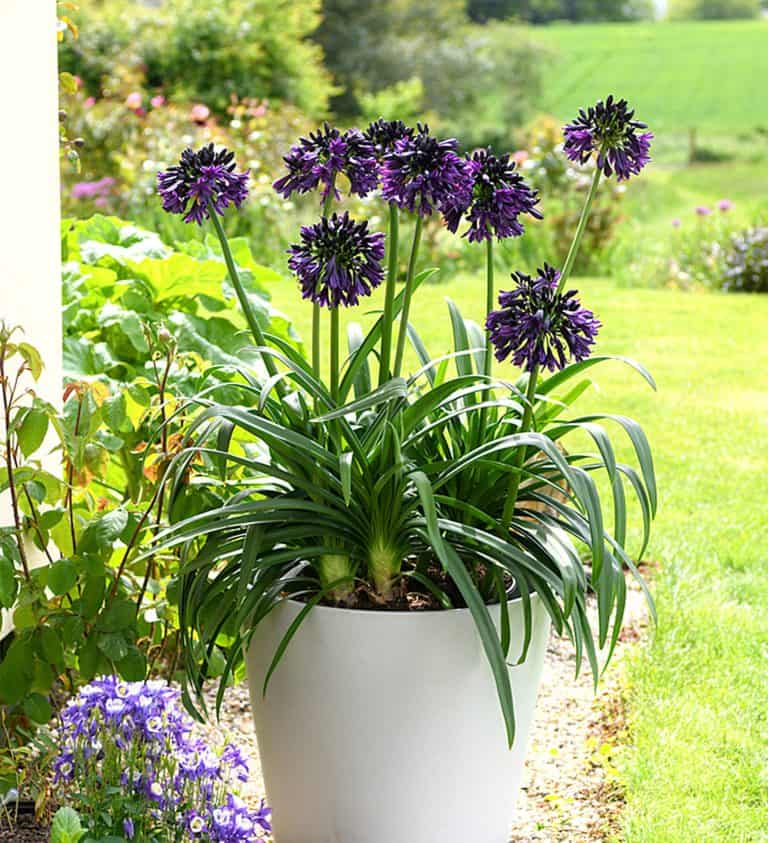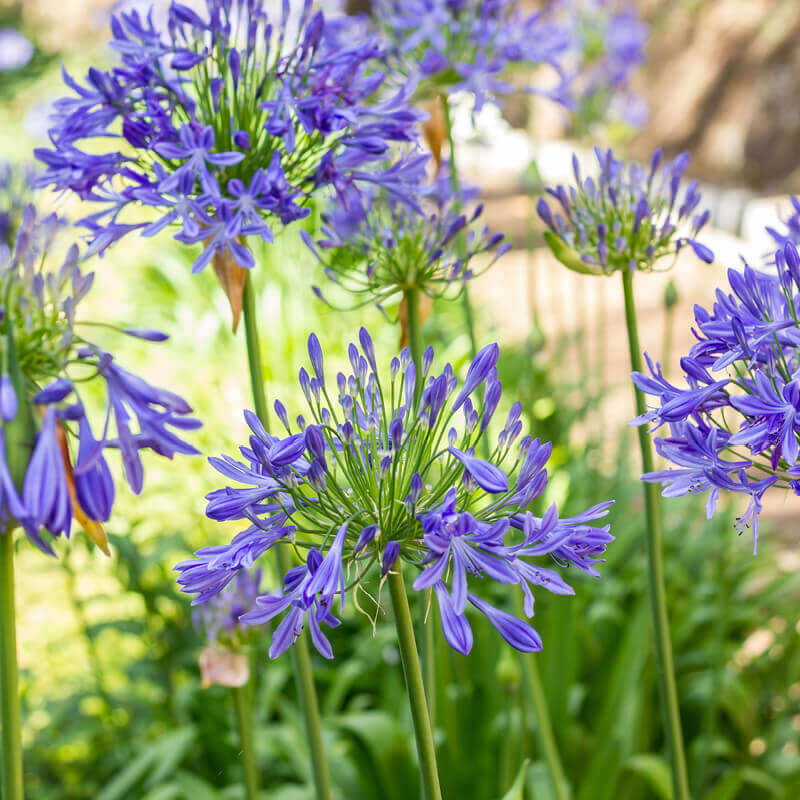Agapanthus Growing Conditions: Dirt, Sunshine, and Watering
Grasping the Art of Agapanthus Care: Vital Actions for Healthy Development and Dynamic Blossoms
In the realm of gardening, the cultivation of agapanthus stands as a satisfying undertaking for those that seek to nurture these elegant flowering plants. From choosing the best range to understanding trimming methods, the journey in the direction of growing flourishing agapanthus plants is multifaceted and holds the crucial to unlocking the complete possibility of these agricultural treasures.

Selecting the Right Agapanthus Variety

When selecting the best Agapanthus selection for your garden, think about elements such as environment suitability, blossom shade, and growth practice. Agapanthus, frequently called Lily of the Nile or African lily, can be found in a selection of shades ranging from tones of blue and purple to white. Choose a bloom shade that matches your existing garden scheme to produce a harmonious landscape. Furthermore, consider the environment in your region to make certain the Agapanthus selection you select can prosper in your particular problems. Some ranges are more tolerant of cold temperatures, while others prefer warmer environments. Comprehending the growth behavior of various Agapanthus ranges is important for appropriate placement within your yard. Some ranges have a clumping development routine, perfect for boundaries or containers, while others have an even more spreading nature, ideal for ground cover or mass growings. By very carefully assessing these variables, you can select the best Agapanthus variety to boost the beauty of your garden.
Suitable Growing Conditions
Considering the optimum ecological demands is necessary for effective Agapanthus cultivation. Agapanthus thrives in well-draining dirt with a slightly acidic to neutral pH degree. When planting, choose an area that gets complete sunlight to partial shade. In hotter environments, offering some afternoon color can protect against scorching of the leaves. Agapanthus plants are sensitive to chilly temperatures and need to be safeguarded from frost throughout cold weather.
To make certain healthy growth and dynamic blooms, plant Agapanthus light bulbs at a depth of regarding 2-4 inches and room them 8-12 inches apart. Including natural issue, such as garden compost, to the soil can enhance drain and fertility, promoting robust root advancement. Mulching around the base of the plants helps keep wetness and suppresses weed growth. Normal watering is crucial, especially throughout the expanding season, to maintain the soil regularly damp however not waterlogged.
Watering and Feeding Tips
Preserving proper dampness degrees and giving necessary nutrients are crucial elements in the care routine for Agapanthus plants. When it pertains to watering Agapanthus, it is crucial to strike an equilibrium. If overwatered, these plants choose continually wet soil yet are vulnerable to root rot. During the expanding season, water deeply once a week, making certain the soil is well-draining to stop waterlogging. In hotter environments or throughout periods of dry spell, even more regular watering might be needed to maintain the soil uniformly damp. Nonetheless, lower watering in the winter to prevent water logged problems.
Fertilizing Agapanthus is vital for promoting healthy and balanced development and prolific flowers. Apply a balanced fertilizer, such as a 10-10-10 formula, in the very early springtime as new development arises. By following these watering and feeding suggestions, you can ensure your Agapanthus plants thrive and generate lively, lasting flowers.
Trimming Strategies for Agapanthus
Trimming Agapanthus plants at the proper times and with correct strategies is crucial for keeping their wellness and advertising ideal growth and flowering. The excellent time to trim Agapanthus is in late winter season her latest blog or early spring before brand-new development arises. Begin by removing any kind of yellowing or dead fallen leaves near the base of the plant. Cut them as close to the ground as feasible without damaging the arising shoots.
Deadheading invested flowers can likewise reroute the plant's energy right into generating more flowers instead than setting seeds. If you desire to accumulate seeds for propagation, leave some blossoms to completely dry and mature on the plant.
Keep in mind to make use of clean, sharp tools to make specific cuts and reduce the danger of presenting conditions. Agapanthus. Regular pruning will certainly aid keep your Agapanthus looking neat and healthy while making sure a plentiful display of lovely blooms
Taking Care Of Typical Parasites and Diseases
After making sure correct trimming strategies for Agapanthus, it is necessary to attend to typical pests and illness that can influence the health and vigor of these plants. Agapanthus plants are generally hardy however can still come down with particular issues. One typical pest that impacts Agapanthus is the Agapanthus gall midge. This small, orange fly lays its eggs in the vegetation, leading to distorted development and blossom buds that fall short to open up. To combat this bug, trim and ruin any affected plant parts and take into consideration making use of insecticidal soap.
One more common concern is fungal fallen leave area, which offers as dark lesions on the fallen leaves. To avoid fungal illness, make certain good air circulation around the plants, stay clear of overhanging watering, and get rid of any infected fallen leaves without delay. Additionally, Agapanthus plants can struggle with origin rot if they are planted in improperly draining pipes soil. To avoid this, plant Agapanthus in well-draining dirt and stay clear of overwatering. By being cautious and taking timely action against illness and bugs, see here you can aid your Agapanthus plants thrive and create dynamic blooms.

Conclusion
To conclude, mastering the art of agapanthus care includes picking the right selection, supplying he has a good point optimal planting problems, correct watering and fertilizing, proper trimming techniques, and dealing with typical insects and diseases. By adhering to these vital actions, you can ensure healthy growth and vibrant blossoms for your agapanthus plants. Remember to consistently monitor and maintain your plants to advertise their overall health and durability.
To make sure healthy and balanced development and dynamic blossoms, plant Agapanthus bulbs at a deepness of concerning 2-4 inches and room them 8-12 inches apart. By following these watering and fertilizing ideas, you can ensure your Agapanthus plants flourish and produce vibrant, resilient blossoms.
One usual pest that impacts Agapanthus is the Agapanthus gall midge. Additionally, Agapanthus plants can suffer from origin rot if they are planted in badly draining pipes dirt. By complying with these vital actions, you can guarantee healthy and balanced development and vibrant blossoms for your agapanthus plants.